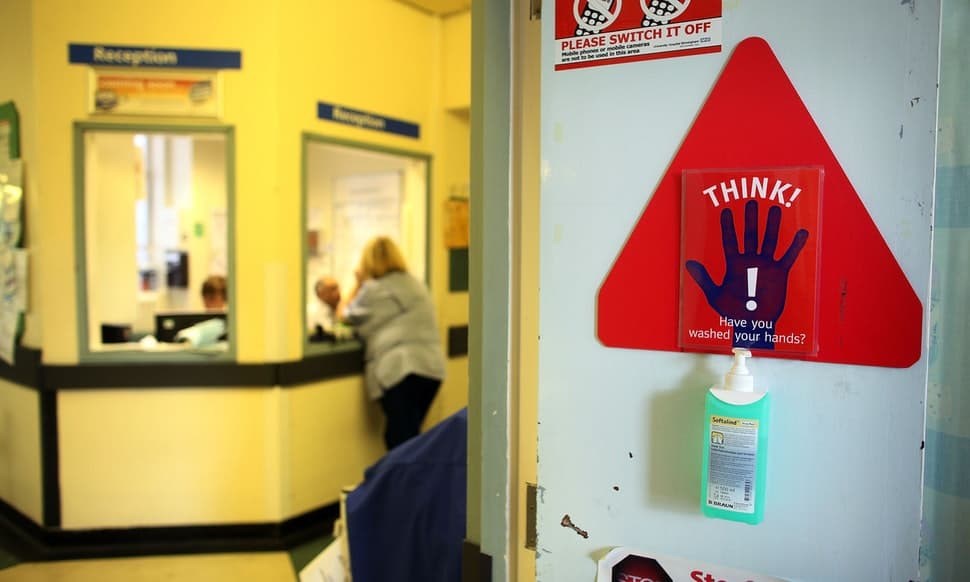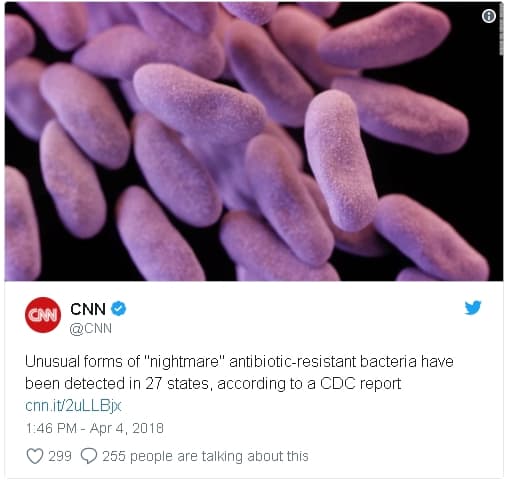
The report, which was published April 3 by the CDC, is the result of CDC testing of “5,776 isolates of antibiotic-resistant germs from hospitals and nursing homes,” CNN reported. The tests found that one in four of the sampled germs “had a gene that helped spread its resistance,” and 221 samples “contained an ‘especially rare resistance gene,'” Dr. Anne Schuchat, principal deputy director of the CDC, told CNN.
Schuchat also said she was “surprised by the numbers we found,” and indicated that the resistant germs are not contained to isolated areas. The 221 samples with rare resistance genes were from 27 different states, “from infection samples that included pneumonia, bloodstream infections and urinary tract infections,” Schuchat told CNN.
Hearing “not contained” may make you a little panicky. But it may help you to know that though the bacteria are not isolated, they’re also not widespread, and this report is part of the CDC being proactive.

“We are working to get in front of them before they do become common,” Schuchat said at a news conference on April 3, Live Science reported. “We have data showing an aggressive approach works.”
The aggressive approach builds off prevention recommendations the CDC first began issuing in 2009, according to the report. The recommendations were created in response to antibiotic-resistant “nightmare bacteria” called carbapenem-resistant Enterobacteriaceae (CRE), which kill up to 50 percent of people they infect and can spread their antibiotic resistance to other bacteria, according to the CDC.
Based on information about CRE, in 2017, the CDC established the Antibiotic Resistance Laboratory Network (ARLN) and released a five-point containment strategy for “novel multidrug-resistant organisms” that, according to ARLN data studied for the April 3 report, “can slow emergence and even decrease the occurrence of infections from resistant pathogens.”
So, here’s how the CDC intends to keep us safe in the “post-antibiotic era.” First, by making sure the CDC is capable of “rapid detection of targeted pathogens and their resistance mechanisms.” Once an infection is confirmed, the CDC will conduct “on-site infection control assessments […] to identify gaps in infection prevention,” and will screen people potentially exposed to the superbug “to identify asymptomatic colonization.” With all that done, the CDC will coordinate response among various healthcare facilities and “[continue] these interventions until transmission is controlled,” according to the report.
Researchers who participated in the study used a mathematical model to theorize that three years of successful implementation of this strategy could result in up to 1,600 fewer clinical cases of CRE.
Of course, controlling superbugs in an up-close-and-personal way requires staff, and the CDC says in the report that it “supports approximately 500 persons in state and local health departments to work on health care-associated infections and antimicrobial resistance.” It does so because “[l]imiting the spread of emerging forms of antibiotic resistance is a public health priority, and a timely and coordinate effort among health care facilities, local and state health departments, and the CDC is needed to accomplish this goal,” according to the report.
The CDC says in the report that it is already working on improving upon its five-point containment plan, including “[focusing] on identifying strategies to decrease the time from specimen collection to public health response.” According to the report, the first year of ARLN implementation has allowed healthcare officials to more capably identify and respond to “high concern organisms” so they don’t have the chance to spread.
Knowing there are deadly bacteria out there is skin-crawlingly upsetting, but this new report indicates the CDC is, thankfully, a few steps ahead of superbugs.























